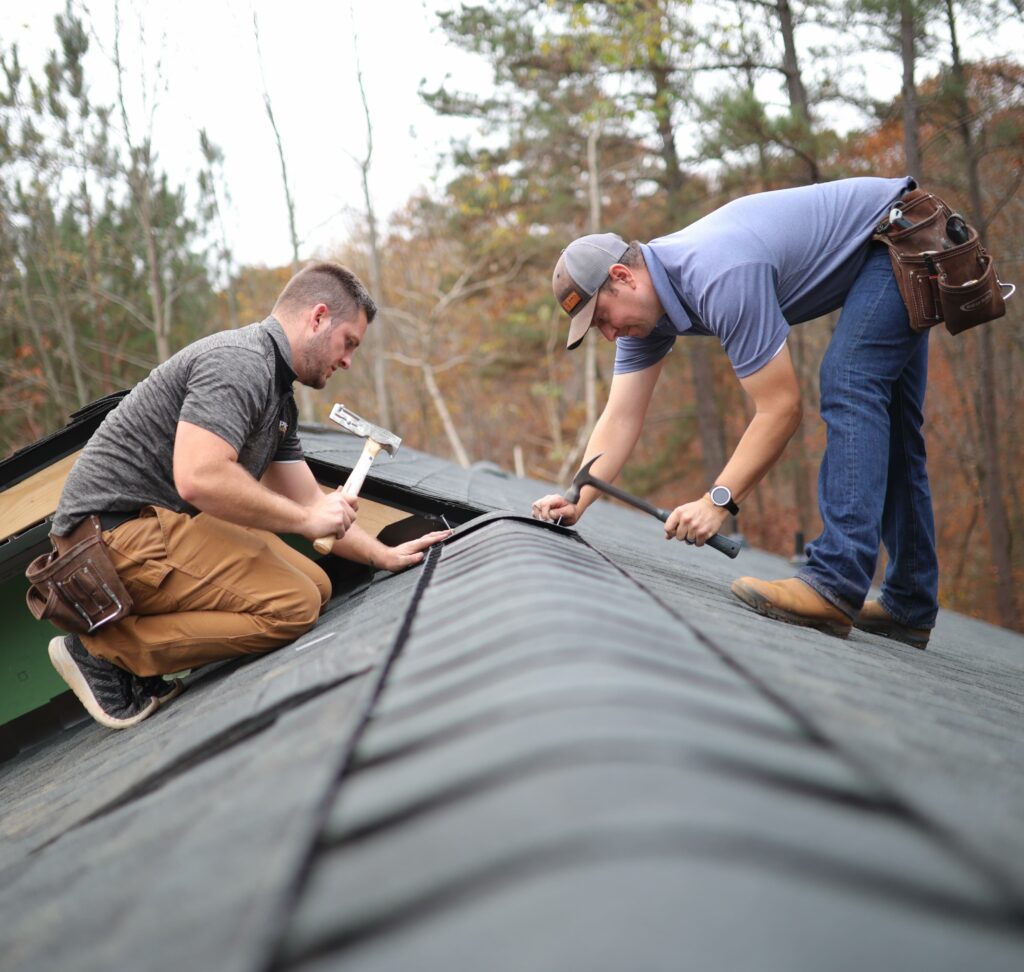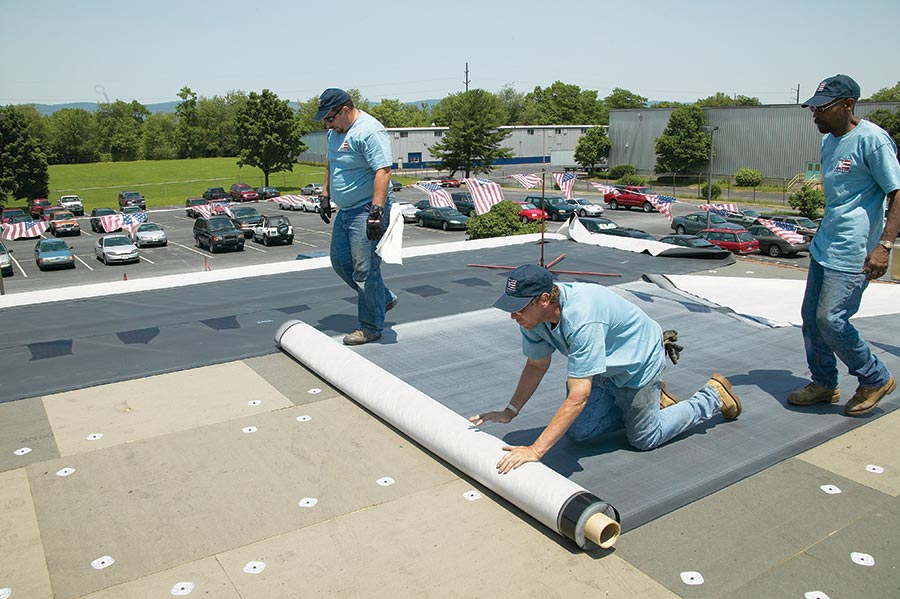A Comprehensive Overview to Effective Roof Covering Apartment Roof Covering Installment
The intricacies of level roof installation demand a meticulous approach, beginning with a comprehensive understanding of various flat roofing system kinds and the essential materials needed for optimum efficiency. An effective installment pivots not only on the option of materials yet also on the prep work and implementation of each action included in the process. As we explore the crucial stages from prep work to upkeep, it ends up being obvious that ignoring even minor information can dramatically influence the roofing's durability and effectiveness. What specific strategies can make certain a smooth installment that stands up to the test of time?
Recognizing Flat Roof Covering Types
When considering level roofing systems, it is important to recognize the various kinds available, as each deals distinct advantages and negative aspects tailored to details needs. One of the most common sorts of flat roofing systems include Built-Up Roof (BUR), Modified Bitumen, and Single-Ply membrane layers.
Built-Up Roofing is composed of multiple layers of asphalt and gravel, giving outstanding resilience and weather condition resistance. It is particularly helpful in areas susceptible to extreme weather problems yet may need even more upkeep due to its complicated building and construction.
Modified Bitumen is a preferred choice for its simplicity of installment and adaptability. It frequently utilizes a torch-applied or self-adhesive method, which can be beneficial for fast fixings and long-term performance. Nevertheless, its life expectancy can be much shorter contrasted to BUR.
Single-Ply membranes, including Thermoplastic Olefin (TPO) and Ethylene Propylene Diene Monomer (EPDM), are acknowledged for their light-weight nature and power efficiency. These materials are frequently liked for business structures as a result of their cost-effectiveness and convenience of installment (Cleveland Roofing Specialists). Nonetheless, they may not provide the same level of insulation as other options.
Each roof kind needs cautious factor to consider based on climate, budget plan, and particular job demands.
Vital Materials for Flat Roofing
A variety of important materials are essential for the successful installation of level roof covering systems. The selection of products straight effects toughness, efficiency, and overall effectiveness.
One of the key materials is the roof covering membrane layer, which can be built from different substances such as polycarbonate polyolefin (TPO), ethylene propylene diene monomer (EPDM), or PVC. Each kind uses special advantages, including UV resistance and adaptability, which are crucial for extended performance.
In enhancement to the membrane layer, insulation materials play a significant duty in power effectiveness. Rigid foam boards or polyisocyanurate insulation are preferred options, as they offer excellent thermal resistance and dampness administration.
Additionally, roofing adhesives and sealers are vital for guaranteeing a watertight installment. These products have to be suitable with the chosen membrane layer to avoid deterioration with time.
Getting Ready For Installation
Correct prep work is vital for an effective flat roof covering setup, as it lays the foundation for a effective and resilient roof covering system. Begin by carrying out a comprehensive assessment of the existing roof covering structure.
Next, collect all necessary tools and materials, making certain that they fulfill industry standards. Check This Out This includes water resistant membrane layers, insulation, blinking, and bolts. Familiarize yourself with the producer's specs, as adherence to these standards is critical for warranty purposes.
Take into consideration weather condition problems; avoid installation during hefty rain or extreme temperature levels, which can influence material performance. By taking these primary steps, you can enhance the chance of an effective flat roof installment that satisfies both structural and visual needs.
Step-by-Step Setup Process
With the foundation established via complete preparation, the following stage involves implementing the level roofing system installment systematically. Begin by ensuring that the architectural deck is complimentary and clean from debris. Next off, set up a vapor barrier to stop wetness buildup below the roof covering material. This action is important for maintaining the roofing's integrity gradually.
Adhering to the vapor barrier installation, put down insulation boards, guaranteeing they fit firmly with each other to minimize thermal connecting. Safeguard the insulation with appropriate fasteners based upon the roof covering type and regional structure codes. Once the insulation is in location, it's time to use the roof membrane layer. Depending upon the selected product-- such as TPO, EPDM, or modified bitumen-- set up the membrane according to the maker's specs.
Ensure correct overlap at sides and joints to develop a water tight seal. Make use of adhesives, mechanical bolts, or heat welding as required. Mount blinking around borders, vents, and any kind of roof covering infiltrations to boost waterproofing. After installment, conduct a comprehensive assessment to determine any type of prospective problems before concluding the project, ensuring a robust and dependable level roof covering system.
Upkeep Tips for Durability
Regular upkeep is necessary to make sure the durability and performance of a level roofing system. Among the main tasks is to perform routine inspections at the very least two times a year, ideally in springtime and fall. Throughout these assessments, search for indicators of wear, such as sores, cracks, or merging water, which can suggest underlying concerns.

Guaranteeing correct drainage is important to avoid water build-up. Examine and clear gutters, downspouts, and scuppers to guarantee unblocked water circulation. Additionally, examine seals around vents, skylights, and various other infiltrations for any indications of degeneration, using caulk or sealer as needed to maintain a leak-proof obstacle.
Last but not least, consider professional maintenance services every few years for detailed inspections and repair work. By adhering to these maintenance suggestions, you can substantially prolong the life of your level roof covering, guaranteeing it remains a dependable guard against the elements.
Conclusion
Effective flat roofing system setup requires a methodical method including comprehensive inspections, material selection, and precise preparation. Following the described steps during the installation procedure makes certain the correct application of roof covering membrane layers and insulation while improving waterproofing with efficient flashing installation. Furthermore, implementing regular upkeep methods considerably contributes to the longevity of the roofing system. By complying with these Get More Information guidelines, a trusted and sturdy flat roofing remedy can be attained, capable of withstanding numerous environmental conditions.
The complexities of level roofing system installment demand a thorough method, starting with an extensive understanding of numerous flat roofing types and the vital products required for linked here ideal performance.Appropriate prep work is important for an effective level roofing system installment, as it lays the groundwork for a resilient and reliable roof covering system. After setup, perform a thorough assessment to recognize any prospective concerns prior to concluding the job, making certain a trusted and robust level roofing system.

Comments on “Fast and Affordable Cuyahoga Falls Roof Repairs for Quick Fixes and Solutions”